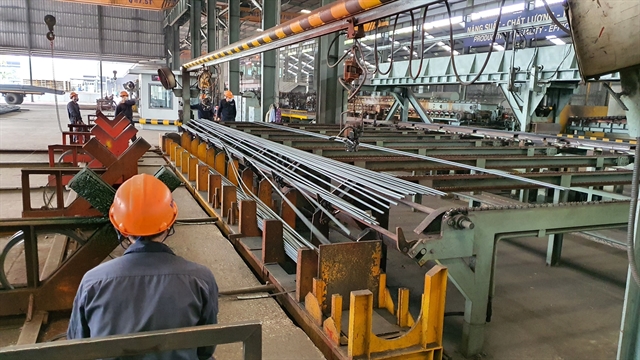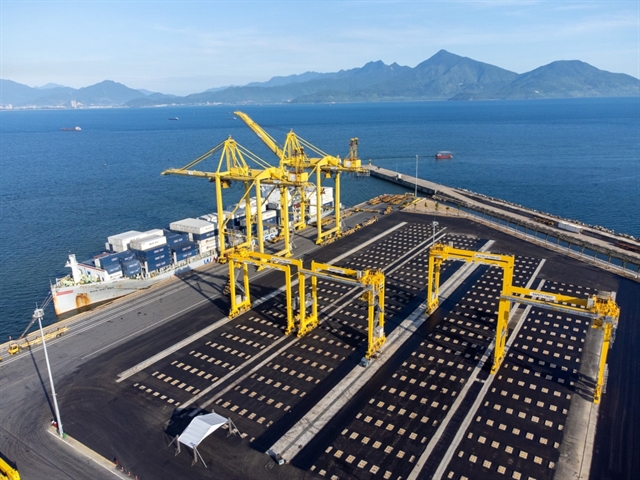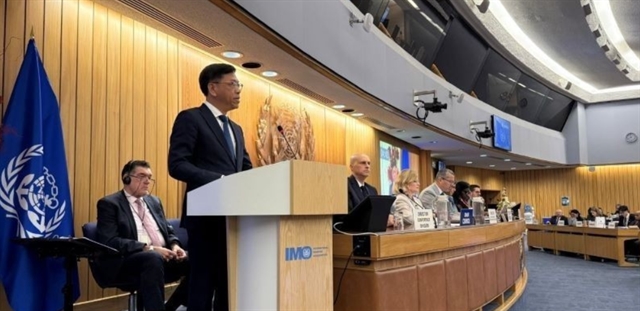 Economy
Economy

 |
| A rice packaging line in the southern province of An Giang. The food production system is currently the largest carbon emitting sector in Việt Nam, due to the traditional agricultural practices and packaging production process. — VNA/VNS Photo Hồng Đạt |
HÀ NỘI — At the 26th UN Climate Change Conference (COP26) in 2021, Prime Minister Phạm Minh Chính made a strong commitment that Việt Nam will achieve carbon neutrality by 2050, setting the country ahead of many others in the journey against climate change.
Countries such as Brazil, India, Thailand, Indonesia, China and Russia have not yet made a net-zero commitment for 2050. This is also a huge challenge for Việt Nam, as it is among the top 20 carbon-emitting countries in the world, accountable for 1 per cent of global emissions.
In the last few years, although policies from the Government and local authorities have focused on reducing carbon emissions, the task remains a major challenge for businesses in many industries.
The Government’s Decree 06 from 2022 stipulates the mitigation of greenhouse gas emissions and the protection of the ozone layer. The Prime Minister’s Decision 13, issued this year, specified a list of sectors and facilities that must report greenhouse gas emissions and conduct emissions inventories.
According to the decision, a total of 2,166 businesses are required to report greenhouse gas emissions by March 2025 and develop plans to reduce emissions.
However, according to Dr Nguyễn Đình Thọ, director of the Institute of Strategy and Policy on Natural Resources and Environment (under the Ministry of Natural Resources and Environment), only about 10 per cent of them are ready to report.
"These businesses are in sectors such as steel production, cement production and thermal power generation, which are the sectors that the Ministry of Natural Resources and Environment is pushing to meet the reporting deadline," he said.
 |
| Associate Professor, Dr Nguyễn Đình Thọ, director of the Institute of Strategy and Policy on Natural Resources and Environment. — Photo vneconomy.vn |
The year 2025 will be a crucial year, as countries will have to submit updated emissions reduction targets for their nationally determined contributions (NDCs), Thọ added.
NDCs are the commitments that countries make to reduce their greenhouse gas emissions, which were requested in the Paris Agreement that was adopted at the 21st UN Climate Change Conference (COP21) in 2015.
Việt Nam developed its first NDC in 2015, after COP21. The first update was conducted in 2020, in which the country pledged to reduce emissions by 27 per cent with international support and 9 per cent without. In the second update, in 2022, Việt Nam committed to a 43.5 per cent reduction with international support, 15.85 per cent without.
“In 2025, when the next commitment update is due, it will be a significant challenge for Việt Nam,” said Thọ. “To make progress toward the net-zero goal, the country will need to focus on the largest emitting sectors.”
The largest emitting sector in Việt Nam at the moment is the food production system, which accounts for 33 per cent of emissions due to packaging production, plastic use in food packaging and traditional agricultural production, Thọ said. Next are the construction, transport and textile manufacturing sectors.
Government agencies in each sector have made efforts to reduce emissions, according to Thọ.
The Ministry of Construction has developed standards for green cities and green buildings. The Ministry of Transport has launched initiatives to encourage people to switch from using personal vehicles to public transport, from coal-powered vehicles to those using renewable energy. Textile manufacturing has been identified as a priority sector in the national action plan for circular economy implementation.
As an agricultural country, Việt Nam has also implemented many carbon absorption projects. However, they are not supported as much as technology-based projects aimed at reducing emissions, Thọ said.
According to Decree 06 from 2022, in the mandatory carbon credit market, businesses are allowed to use credits to offset the allocated emissions cap, but the extra emissions cannot exceed 10 per cent of the total allocated amount.
“This means that businesses must focus on emissions reduction by using new technology in production, as well as clean energy,” Thọ said. — VNS




